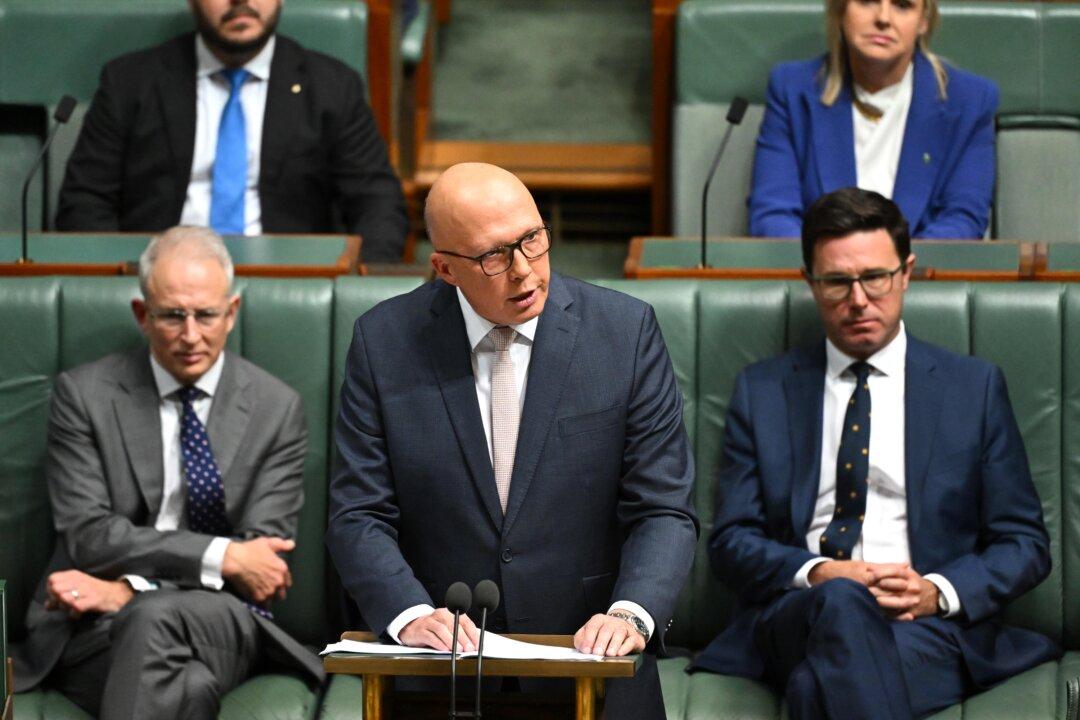You have to wonder whether Australia’s federal and state Labor governments are trying to drive private landlords out of the residential market.
It would be perverse behaviour when Australia has a housing rental and home ownership crisis, but the only alternative explanation is incompetence.
In the first place, they’ve set the country up for housing failure.
Net migration over the next two years is set to be 700,000. Normally it would have been something like 470,000 over the same period.
An additional 230,000 net will require around 46,000 additional dwellings every year at 2.5 people per dwelling.
That would be around a 25 percent increase in building starts; at the same time, the Housing Industry Association is predicting a decrease in building activity.
But it takes around a year at the moment to build a new house or unit block, so even if the industry could cope with the additional demand, we are already behind before it could even conceivably ramp up.
This has to be a prime driver behind the increase in rents, which is also driving an increase in housing prices, even as interest rates go up.
And it combines with restrictive planning laws and onerous taxes and charges on developers (which are passed on to purchasers), making it difficult to bring extra affordable supply onto the market, particularly as inflation and supply shortages are putting up the price of labour and materials.
There is no shortage of land in Australia, so this crisis is entirely manmade.
The casualties are everywhere. At the extreme, the homeless are increasingly visible on the streets, tent cities spring up in parks, and news items regularly feature people who have fallen out of the housing market.

The Response From State Governments
There appears to be a widespread acknowledgement that we need more supply, but little seems to have changed in this area.Instead, the tangible response has tended to focus on a “need” for more social and public housing; and for tenants to gain greater protections.
Both of these are misconceived and make the problem worse. But they do fit well with Labor preoccupations with standardising and centralising in the government the provision of many basic needs.
At the moment, private rentals take up the vast majority of the rental market. According to the census, 10 percent of rental housing is provided by the states and territories and three percent by community housing providers.
To leverage a meaningful increase in the rental housing stock, it is going to have to come from private owners.
This is even more so as the cost of government-provided housing is much higher than private housing.

Developers can deliver a 4-bedroom house with a two-car garage, butler’s pantry, and media room for around the same amount in a regional area—that’s a 25 percent reduction in price per person housed.
At the Caloundra price, that would be $49 billion. Total state budget expenditure is only $84 billion this year, and total debt currently stands at $54 billion and will rise to $62 billion next year. The state can’t take on that amount of additional housing.
Driving Away the Private Sector
The QCOSS figures are certainly inflated, but even so, there is only one group that can finance the extra expenditure, and that is the private sector.Blame must also be apportioned to the federal government, which has toyed with the idea of abolishing negative gearing and the capital gains tax discount, while direct and indirect policies have increased building and maintenance costs at the same time as borrowing costs have gone up.
The state governments have also contributed by hiking land taxes.
In Brisbane, for example, there is a disincentive for an investor to buy a second rental property because they will lose around one-quarter of the additional income in land tax.
Then there is the threat of rent controls. Why wouldn’t a government that puts caps on the price of gas or coal put a cap on rent?
Bizarrely the federal government has been toying with tax concessions to encourage large-scale buy-to-rent schemes at the same time as wanting to take legitimate tax deductions away from private landlords.
Yet private owners are the most efficient landlords. In an asset class where you are lucky to gain a two percent cash return after paying interest, maintenance, management fees, land tax, and personal taxation on an asset that returns generally no more than five percent gross, large investors struggle.
The reason small investors thrive is they often gear the asset 100 percent, use the collateral in their home, and perform management and maintenance themselves. They do it for the capital gains which they magnify using extreme financial engineering.
With a 10 percent deposit and four percent growth per year on the total asset, their capital will multiply more than four times over 10 years, and they get a return on their labour along the way.
These economics aren’t available to large-scale build-to-rent developers, hence the call for government subsidies or concessions.
Prime Minister Anthony Albanese is fond of telling us he grew up in public housing, and this appears to be a case of mixed emotions.

While he advances it as a badge of deprivation honour, across the Labor party, there is a romantic view of public housing as the nest that mother Australia provides her needy.
Public housing has never contributed significantly to Australian housing, and no government shouldn’t let sentimentality and natural prejudices cloud their vision.
To ultimately solve the housing crisis, you need to set everyday Australians free to invest, and they need new stock to invest in.
So spend your efforts freeing-up land supply, and please leave the lower to the middle class, who provide 83 percent of rental stock alone.





